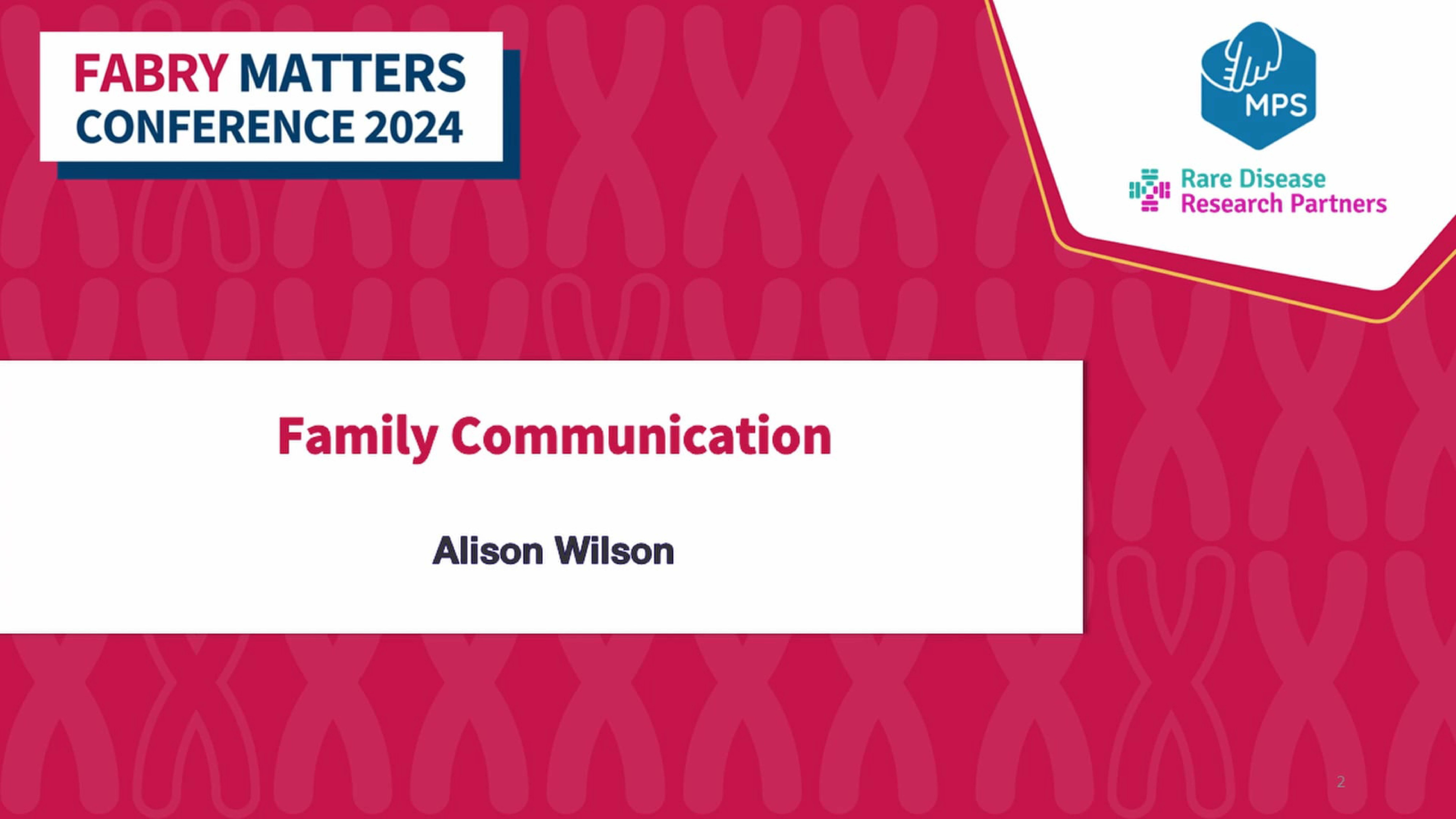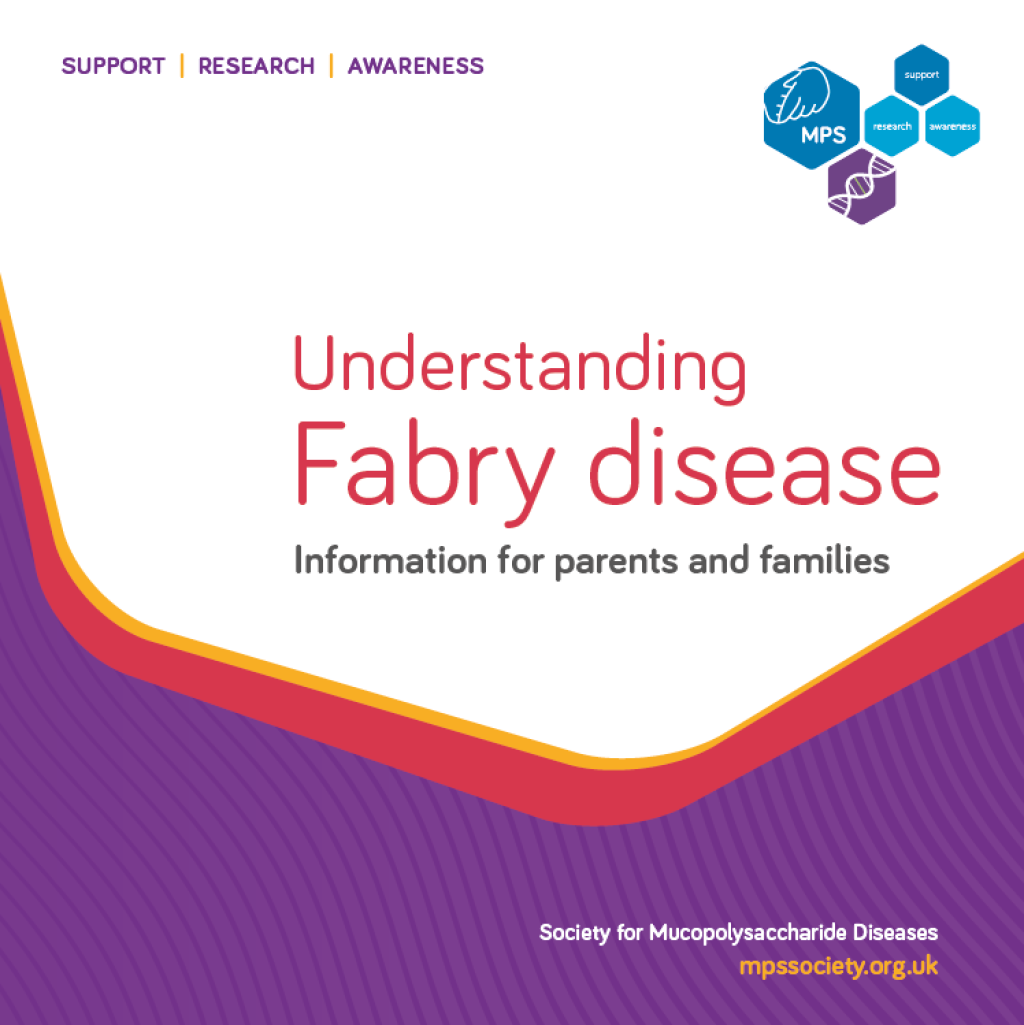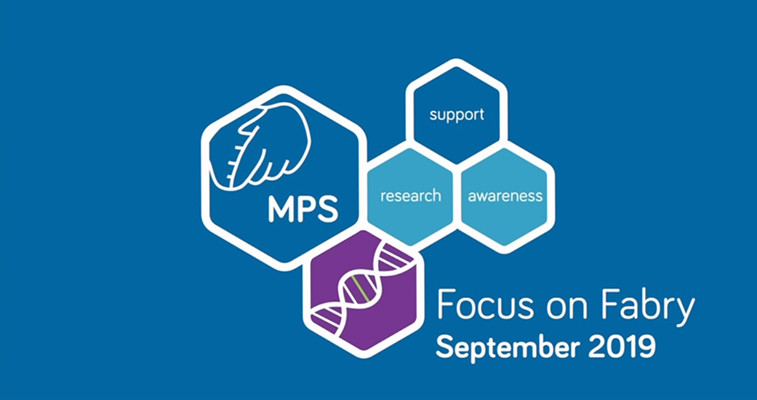Understanding and communicating information about Fabry disease within families can be challenging, especially since the condition can present so differently, even among close relatives.
Read on for suggestions on how families can approach conversations with more confidence and support.
How Fabry is inherited
The gene responsible for Fabry disease is carried on the X chromosome, which means both males and females can be affected.
Understanding genetic variants
Fabry is caused by variants in the GLA gene, affecting the enzyme alpha-galactosidase A.
Knowing your specific GLA gene change can go some way to determining the course that an individual’s Fabry might take. For example, we know that some gene changes are linked with a classical presentation of Fabry, while others are associated with later onset variants.
But there remains a great deal of uncertainly with regards the variability of Fabry disease.
Not all changes in the Fabry gene are harmful. We know that some genetic changes of the Fabry gene do not cause symptoms or require ongoing follow-up.
Ongoing research continues to improve how these variants are interpreted, helping clinicians provide more accurate diagnoses and care.
Fabry varies from person to person
Fabry disease can be really difficult to predict. Even with the same change in the GLA gene, symptoms can differ significantly between family members. Several factors influence this variability:
Genetics: Classical and non-classical GLA variants lead to different patterns of disease
Sex: Because Fabry is X-linked, men and women can experience it differently. Women can sometimes be impacted as severely as men which differs from most other X-linked conditions.
Age: Symptoms progress over time. The age of onset of symptoms and the rate of progression are highly individual.
Lifestyle and overall health: Maintaining your general health is essential. Having other health issues alongside may exacerbate symptoms and make Fabry disease more difficult to manage.
Talking about Fabry in the family
At the 2024 Fabry Matters Conference, we hosted workshops for families and professionals focussing on family communication. Many families shared how difficult it can be to know what and how much to tell relatives, especially stressing the importance of communicating effectively without frightening or causing distress.
Guilt, fear and difficulty in managing the responses of family members were all raised as reasons why our members struggle to communicate risk to their families.
To make communication easier, it may be helpful to use a Dear Relative letter - a personal, calm and informative way to explain Fabry to family members who might also be at risk. The letter should cover:
What Fabry is and how it’s inherited
Why genetic testing may be recommended
Next steps
Support and resources available through the MPS Society
Families can personalise the letter with their details and genetic variant. It’s designed to reduce anxiety and empower families to share important information responsibly.








